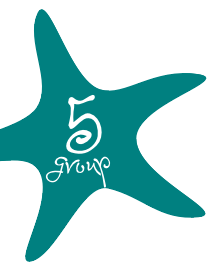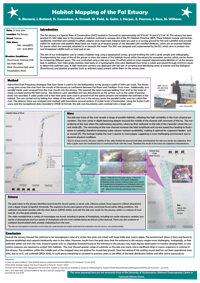



|
Location Purpose |
Start Time (AST) |
Position in water |
End Time (AST) |
Position out of water |
|
Transect 1 |
08:20:20 |
50°11'22.47"N |
08:29:16 |
50°12'13.91"N |
|
|
|
5° 2'2.79"W |
|
5° 2'15.77"W |
|
Transect 2 |
08:30:45 |
50°12'13.40"N |
08:38:54 |
50°11'23.95N |
|
|
|
5° 2'20.20"W |
|
5° 2'7.64"W |
|
Transect 3 |
09:23:01 |
50°13'29.67"N |
09:42:02 |
50°12'5.24"N |
|
|
|
5° 0'59.01"W |
|
5° 2'26.80"W |
|
Grab 1 |
10:40 |
50°11'52.80"N |
N/A |
50°11'52.80"N |
|
|
|
5° 2'15.90"W |
|
5° 2'15.90"W |
|
Video 1 |
10:05 |
50°11'50.91"N |
10:11 |
50°11'50.91"N |
|
|
|
5° 2'12.97"W |
|
5° 2'12.97"W |
|
Video 2 |
10:13:37 |
50°11'53.92"N |
10:18:06 |
50°11'54.19"N |
|
|
|
5° 2'16.6"W |
|
5° 2'15.59"W |
|
Video 3 |
11:02:24 |
50°13'17.34"N |
11:06:13 |
50°13'17.34"N |
|
|
|
5° 1'30.22"W |
|
5° 1'30.23"W |
|
Video 4 |
11:13:14 |
50°12'56.06"N |
11:17:22 |
50°12'56.06"N |
|
|
|
5° 1'30.22"W |
|
5° 1'30.22"W |
|
|
Site 1 |
|
|
Species |
Video 1 |
Video 2 |
|
Ulva lactuca |
1 |
2 |
|
Linneaus furcellaria |
1 |
|
|
Lumbicalis saccharina |
|
1 |
|
Palmaria palmate |
|
1 |
|
Callophyllis laciniata |
1 |
1 |
|
Enteromorpha lunza |
1 |
1 |
|
Gracilaria verrucosa |
3 |
|
|
Furcellaria lumbrucalis |
1 |
1 |
|
Porphyra umbilicalis |
1 |
|
|
Calliblepharis ciliate |
1 |
|
|
Dictyata dichotoma |
1 |
|
|
Gigartina stellata |
1 |
2 |
|
Asparagopsis armata |
|
1 |
|
Halarachion ligulatum |
|
1 |
|
Coriallina officinalis (bleached) |
|
1 |
|
Nitophyllum punctuation |
|
1 |
|
Corallina elongate ellis |
|
1 |
|
Laminaria saccharina |
|
1 |
